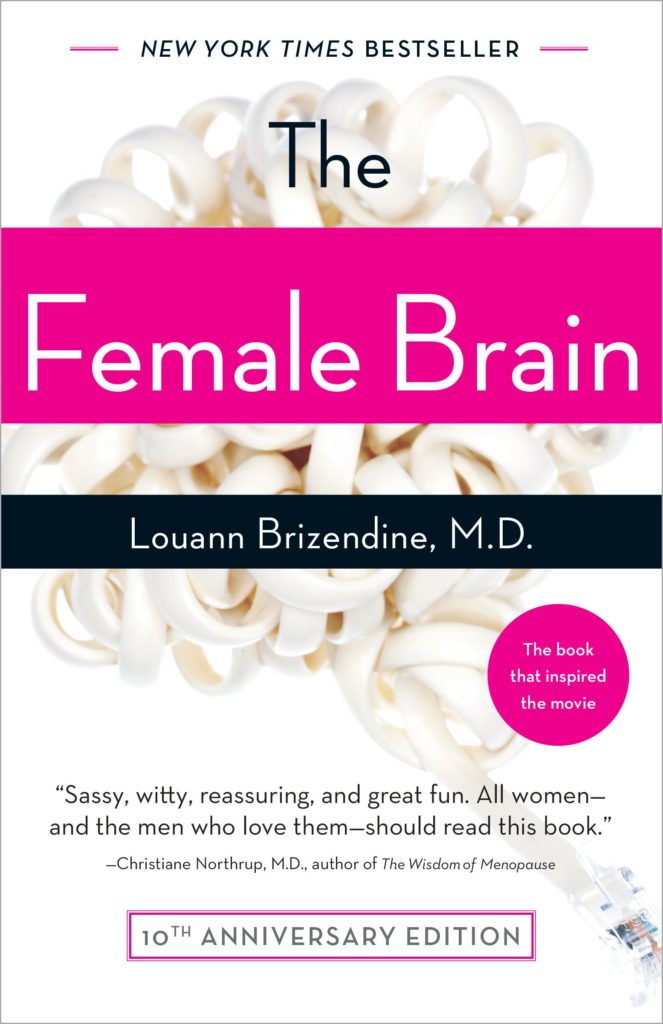- Visitor:19
- Published on:
The Female Brain by Louann Brizendine: A Book Review
More than 99 percent of male and female genetic coding is exactly the same. Out of the thirty thousand genes in the human genome, less than one percent variation is small. But that percentage difference influences every single cell in our bodies. Read this wonderful book by Louann Brizendine to know more.

The human brain is a finely tuned, sophisticated and talented instrument. It shapes and defines our reality. What if male and female brains were structurally different? Common sense tells us that two distinct brains will have unique aptitudes, potentials and realities. Well, since decades modern scientists, in absence of advanced technological research used to think that a brain is a brain. The Feminist movement and gender neutrality advocates also claimed that gender is a social and cultural construct blocking possibilities for research in this subject for long. Brain is unisex, they asserted. However, in her wonderfully well written and unique work, The Female Brain, Doctor Louann Brizendine introduces us to the fundamental role that distinct biology plays in making us who we are. Her work reveals that it is not culture that shapes the brain. Rather, it is the other way round. The brain has dictated, molded and made culture yield to the unique biology of men and women.
In her comprehensive research-based book, The Female Brain, Louann Brizendine writes that pathbreaking development in genetics and non-invasive brain imaging technology ushered a complete revolution in neuroscientific research and theory. New tools and technology made it possible to see inside the human brain in real time and observe its response while socializing, solving problems, talking, mating, etc. This revealed vast and variegated differences in how male and female brains function. It was only with this advancement in science and technology that the distinct structure, function and chemistry of a woman’s brain was scientifically recognized and acknowledged. Finally, science arrived where humanity already had, gender is not a myth or social construct.
The book is divided into seven chapters which discuss in detail different stages in the life of a female brain. It traces the lifelong expedition of female brain beginning in utero to post menopause phase. The author explains scientific phenomenon through simple and interesting anecdotes and examples from the lives of her patients. Based on scientific logic and substantiated with generous evidence and empirical studies the book is not just another opinion piece. The Female Brain makes its case on the basis of scientific truth and does not cater to political correctness of “mandatory unisex” or genderfluidity.
This book demolishes the over-hyped debate of Nature vs. Nurture by showing that biology is the foundation of human personality and it powerfully influences our behavioral tendencies. Louann mentions a surprising array of differences in female and male brain. For example, in the centers for hearing and listening, women have 11 percent more neurons than men making them better listeners and avid communicators.
The hippocampus which is the principal hub for memory formation and emotions is larger in the female brain and so is the brain circuitry for language and observing emotions in others. No doubt women were always credited for having a fast memory, being more empathetic, understanding and emotionally more responsive than men.

In chapter 1 titled, The Birth of the Female Brain, the author tells us that a girl child is born with a female brain which comes complete with its own impulses. So, when a girl child chooses to play house with dolls over trucks, she isn’t motivated to do so by socialization but because of different brain wiring. The author writes that nature has the strongest hand in launching sex-specific behaviors. “Biology and gender education collaborate to make us who we are”, author states. (p. 52)
Teen Girl Brain, fueled with estrogen female brain starts unfolding ancient instructions on how to be a woman. Studies show that women are motivated on a molecular and neurological level to ease and prevent social conflict, especially a teenage girl. She derives her self-esteem from maintaining harmonious relationships unlike men who derive it by maintaining independence. The cultural belief that women need the protective, caring and nurturing layer of family cannot be over-stressed.
The third chapter, Love and Trust brings out the interesting fact that men on average have ten to one hundred times more testosterone than women and therefore, have three to four times more sex drive. Female from a biological point of view devote less mental space to sexual pursuit.Female brain has evolved to look for long-term partners who are likely to stick around, protect the family and improve their access to food, shelter and other resources.
The Mommy Brain can be called the most significant chapter in the book given that we live in times when the traditional role of a mother is being denigrated. The chapter makes us reflect on the role that motherhood plays in a woman’s life and how central it is to her being. Mothers have a better spatial memory compared to females who have not given birth. A woman who has given birth becomes more sensitive to children in general and can recognize her baby’s unique fragrance, hear him cry quicker than the father. This chapter also discusses pertinent topics such as Attention Work Disorder, which deals with the impact of work life on a mother and the importance of motherhood.
The sixth chapter, Emotion: The Feeling Brain, provides the scientific truth behind the cultural beliefs that women are emotionally more sensitive than men due to the influence of estrogen. This innate and intense biological sensitivity is the reason behind depression gender gap.
The final chapter, The Mature Female Brain will answer your questions as to why a woman in her pre and postmenopausal period behaves a certain way. Why she becomes less concerned about maintaining peace, avoiding conflict. Dr. Louann Brizendine emphasizes that by understanding our distinct biology we can be truly empowered and plan our future better. It can help us become the women we truly want to be instead of playing at the hands of destiny.
To sum up, this groundbreaking work by Dr. Louann Brizendine fills a deep void that had been created by the absence of scientific study on typical female behavior. The book is particularly reassuring for women who were led to believe that their innate tendencies are not innate but imposed by informing women that they are not living a lie. It’s a powerful response to the post-modern movements which push the idea that for women to be equal to men, unisex must be the norm. Assuming and propagating the male norm by pretending that men and women are same has disadvantaged the entire human race but especially women. It has prevented research in science and other fields to suit an exclusive female biology. The Female Brain has finally provided women with a guide to their own brain and natural tendencies. It will help them understand what happens in their brains at every stage and at different situations so they can, if not control, at least have a significant say in deciding their destiny. The book is equally important for men. While it helps women find confidence in their inherent femininity, men should read this work to understand and improve their relationship with the women in their lives. The book also points towards an interesting phenomenon that humanity has been much ahead of modern science in recognizing the biologically induced and influenced typical behavior of women and men. Ancient civilizations executed this understanding of distinct female and male nature as a matter of common sense by structuring societies around it.
The Female Brain has a purpose to serve in the post-modern era. It can help educate women and society about the unique brain-body-behavior-system of women. This will help women recognize and accept their nature instead of waging a war against it under the influence of a gender rights movement which negates gender at the onset of its agenda.
Center for Indic Studies is now on Telegram. For regular updates on Indic Varta, Indic Talks and Indic Courses at CIS, please subscribe to our telegram channel !
- 9 min read
- 0
- 0










